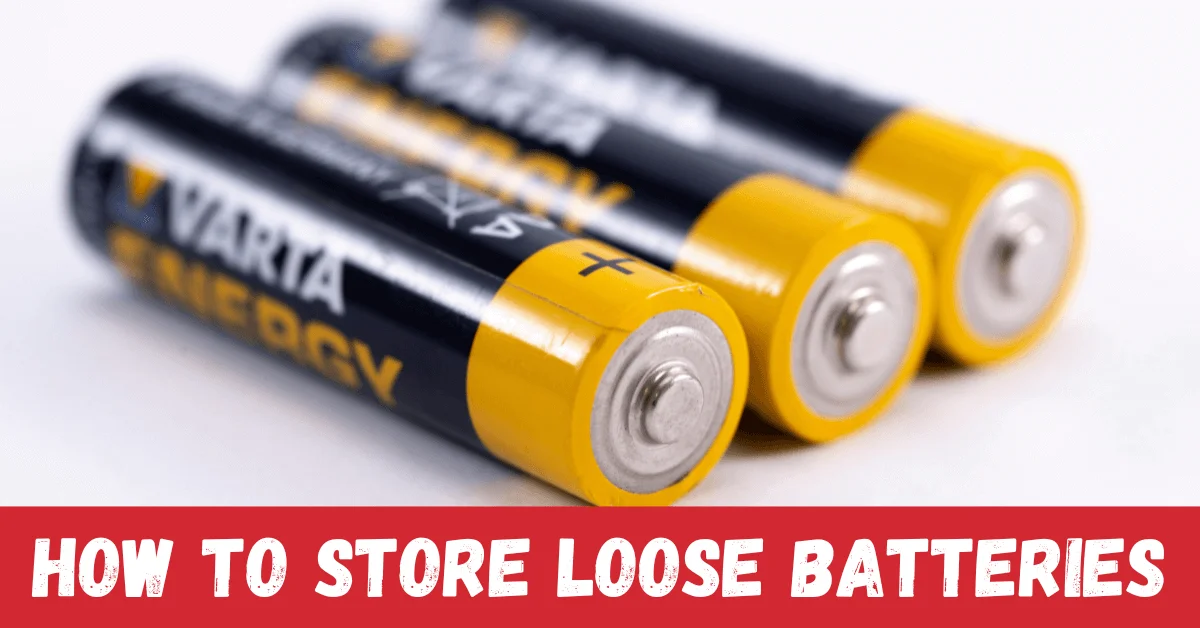Batteries are essential for powering our everyday devices, but improper storage can lead to accidents and reduced battery life. Therefore, understanding the right way to store loose batteries ensures they remain safe and functional when you need them.
To store loose batteries effectively, keep them in a cool, dry place and use a dedicated container that prevents contact between terminals. Additionally, make sure to separate different battery types to avoid potential chemical reactions.
Understanding the Importance of Proper Battery Storage
Storing batteries correctly is crucial for several reasons. Firstly, it helps in maintaining their performance, ensuring they work when you need them most.
Secondly, improper storage can lead to battery leakage, which can damage your devices and pose environmental hazards.
Furthermore, proper storage not only prolongs their lifespan but also minimizes hazards associated with leaking or corroding batteries.
So, by following proper storage guidelines, you can maximize battery longevity and safety.
How to Store Loose Batteries: A Step-by-Step Guide
Storing batteries may seem straightforward, but there are specific practices you should follow to ensure their safety and functionality. Here’s how to store loose batteries effectively.
1. Choose the Right Storage Container
Selecting an appropriate container is the first step in effective battery storage. We suggest you opt for a hard plastic or metal container that can securely hold your batteries.
Avoid using containers that can conduct electricity, as this could lead to short circuits. You may also want to label the container to identify the battery types inside, such as AA, AAA, or rechargeable batteries.
2. Store in a Cool, Dry Location
Heat and moisture can significantly affect battery performance. Therefore, we usually store them in a cool and dry place away from direct sunlight and humidity.
Ideal storage temperatures range from 15°C to 25°C (59°F to 77°F). Avoid areas like basements or garages that can experience extreme temperature fluctuations.
3. Separate Different Battery Types
Different battery types have different chemical compositions and charge capacities, which can lead to dangerous reactions if they come into contact.
Store alkaline, lithium, and rechargeable batteries separately to prevent potential leaks and hazards. Using small ziplock bags or dividers within your container can help keep them organized.
4. Prevent Terminal Contact
As the chances of short-circuiting rise during the storing process of batteries, you can avoid it by preventing battery terminals from coming into contact with each other.
You can do this by placing a piece of tape over the terminals, using battery caps, or storing batteries in their original packaging. This step is especially important for lithium batteries, which are more prone to short-circuiting.
5. Keep Batteries Away from Children and Pets
Batteries can pose a choking hazard and can be harmful if ingested. Store your battery container in a secure location that is out of reach of children and pets. Our recommendation in this scenario is to use a locked drawer or cabinet to prevent any mishaps.
How Do Pros Store Their Batteries?
Professionals often have specific methods for battery storage to ensure maximum longevity and performance. Here are some best practices.
- Inventory Management: Professionals maintain an inventory of batteries, checking expiration dates and rotating stock. This ensures older batteries are used first, preventing waste.
- Temperature Control: In commercial settings, temperature-controlled storage areas help maintain the ideal environment for batteries.
- Regular Testing: Professionals often test batteries before use to ensure they are functioning correctly. This can be done with a multimeter or a battery tester.
Final Say
To conclude things, properly storing loose batteries is essential for both safety and longevity. Start by choosing the right container, and be sure to maintain a cool, dry environment for storage.
Additionally, separate different battery types to prevent reactions. By following these guidelines, you’ll ensure your batteries are ready whenever you need them. With a little care, you can extend battery life and prevent hazardous situations.
FAQs
How to Store AA and AAA Batteries?
AA and AAA batteries can be stored in the same manner as other batteries. Ensure they are in a secure container, kept in a cool, dry place, and avoid contact between terminals.
Can I Store Batteries in a Plastic Container?
Yes, you can store batteries in a plastic container, but as mentioned many times, ensure it is non-conductive and has a secure lid to prevent accidental contact with terminals.
How to Store Batteries for Emergency Use?
For emergencies, keep a set of fully charged batteries in a designated, easy-to-access location. Ensure these batteries are regularly checked and rotated to maintain their charge.
How to Store Lithium Batteries Safely?
Lithium batteries should be stored in a cool, dry place, ideally at room temperature. Avoid exposing them to extreme temperatures or humidity.

